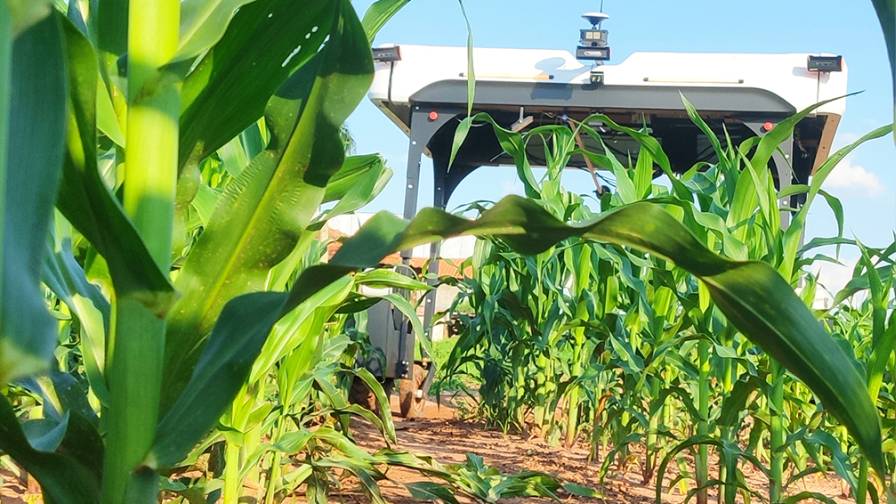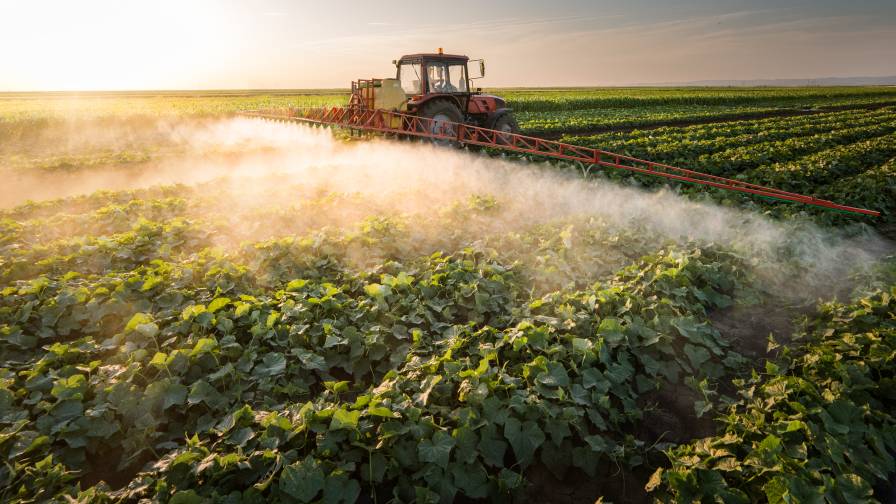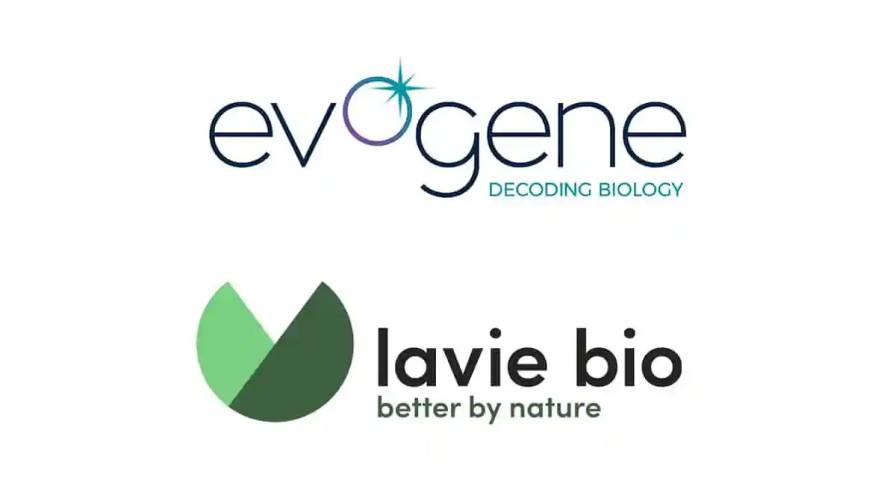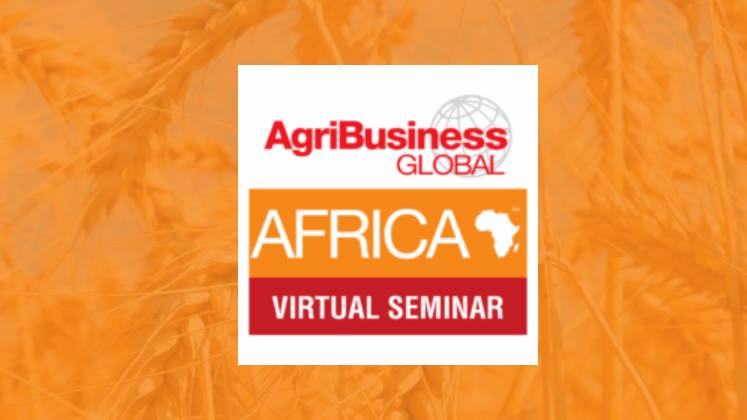Catch a Glimpse of LATAM’s Fast Precision Ag Evolution

There are few segments of agriculture growing as quickly or garnering as much attention as precision technology. Remarkable people are doing extraordinary work all over the world. One such individual is Lais Braido, Chief Financial Officer at Brazilian precision ag powerhouse Solinftec in São Paulo, Brazil, about Solix Ag Robotics. It’s a new device that acts as the eyes and arms of its ALICE AI platform, which is helping producers halve their chemical inputs, reduce soil compaction, and deliver a lower carbon footprint for farm operations of every size worldwide. By the end of this year, Solinftec expects to cover 33 million acres.
The company is in final testing of two Solix models in the United States. At ag cooperative GROWMARK, it’s testing the sprayer version, which sprays deep into the plant instead of from above, eliminating drift and soil compaction issues posed by much larger machines. At Purdue University, it is testing the scouting model, which has taken off in Brazil — where beating pests takes priority over weeds — since launching commercially in April 2021.

Solix Ag Robotics from Solinftec helps producers halve their chemical inputs, reduce soil compaction, and deliver a lower carbon footprint for farm operations of every size worldwide.
Each robot rolls through fields 24-7, covering 400 acres per week, scanning the field plant by plant, identifying pests and generating a variable rate map, which is fed to traditional machines that then spray trouble spots.
“We don’t use data to tell you, ‘This is the prescription,’ and what you did wrong in the past — it won’t help farmers,” Braido says. “You need to adjust in real time, as it’s happening, and to collect results and reduce inputs, avoiding losses because of inefficient application. We transform the data into action.”
The immediate results have kept farmers coming back. The average contract length is five years, and the annual growth rate for revenue is an impressive 60%.
“Sustainability is a key mission for us. By adopting best practices, agriculture has the potential to save us from climate change,” Braido says. “We are already starting that with real solutions that are working inside the farm. What other companies are doing — giving suggestions, prescriptions, measurements, certifications — is fine, but they’re not changing what farmers are doing in a transformative way. We say we are going from precision agriculture to decision agriculture — we need to decide things using better data. This is what ALICE AI is doing on a daily basis on the farm.”
Research and Development (R&D) FROM KJIV
Brijesh Thoppil, Director of Strategic Partnerships at EOS Data Analytics, says his company’s R&D operations, based in Kjiv, Ukraine, is focused on Latin America’s agricultural challenges through AI-powered satellite imagery analytics. Its EOS Crop Monitoring platform is a simple, one-stop solution that integrates multiple types of data (crop health, weather conditions, crop rotation, field activities, elevation, soil moisture, and a host of other types) all on a user-friendly mobile app.
Some of the challenges the app is addressing in the Latin American region include soil conditions (acidity and lack of some mineral nutrients), infrastructure limitations (poor access roads and lack of broad internet coverage in rural areas), and cultural limitations (low adoption of technology).
“Brazil is more reliant on food production exports than Europe or the U.S., and with these exports as the biggest source of its gross domestic profit (GDP), it is easily affected by volatile commodity prices.
Fluctuations can slow down the food production cycle or delay deliverables to customers,” Thoppil says. “Within that context, I believe it is very necessary to implement precision technologies not just in Brazil but other LatAm countries, to not only improve the food production cycle but also optimize the whole process and reduce possible losses.”
Founded in 2015, California-based EOSDA now has 20-plus partnerships worldwide, and in 2022 is set to launch an agriculture-focused satellite constellation. Among its partnerships in Lat-Am, it has teamed up with Agronómico in Paraguay, a provider of high-tech services in soil management and agricultural research, and with reinsurance firm Horizont RE in Mexico to help determine payouts to farmers in the event of crop damage.
For many in LatAam and beyond, the pandemic has driven home the importance of precision technologies. Farm operators are increasingly focused on providing the best conditions to ensure a continuous food production cycle, so they are paying closer attention to factors such as the quality of the soil, and things like tracking vegetative conditions, weather patterns, and precise use of fertilizers and pesticides. To achieve this data, precision technologies are a must.
“They are necessary to maintain not just the farm operation, but quality of output … Demand for these solutions will grow every year,” Thoppil says.
ARC PLATFORM
For the LatAm region, FMC’s Arc Farm Intelligence platform is a simple-to-use mobile platform that uses real-time data to help ensure the right crop protection products are applied precisely where and when they are needed. First launched to support pest monitoring in cotton for FMC customers in Brazil and Greece in 2020, Arc Farm Intelligence has since broadened its range of crops from brassicas to corn to lettuce in 22 countries.
“Brazil, Argentina, and Mexico are live, and we’ve got a lot of strong pull from growers and partners to come into some of the Andean countries — so the next launch will be in Colombia, followed by either Peru or Paraguay,” Jordan Hesterman, Commercial Director for FMC Precision Agriculture tells AgriBusiness Global.
Part of FMC’s approach to providing precise, economic, sustainable crop protection solutions is working with agronomy partners, consortiums of coops and growers, academic institutions, and state-owned ag organizations like Embrapa in Brazil “to make sure the solutions we are providing are laser-focused on grower issues,” Hesterman says.
Arc Farm Intelligence began with a focus on insects, delivering real-time data that predicts insect pressure one week in advance with more than 90% confidence for key insects to help growers protect yields. It will expand commercially to disease and weeds within 18 months. As the Arc Farm Intelligence platform expands to disease, it is looking toward spore sensing technologies for nematodes and weeds, and will incorporate aerial imaging drones for advanced agricultural scouting.
Hesterman breaks down the return on investment into three parts:
1. Lower cost of scouting.
“In LatAm today, internet connectivity is a challenge. We are working with smart trap technologies that can reduce the burden of scouting in those markets,” and where traditional scouting is needed, the platform also offers offline functionality.
2. Saving time on reaching a recommendation.
The Arc Farm Intelligence platform uses algorithms, data science, weather, and contextual data “to get quickly to what is my situation today and what it will be in the foreseeable future.”
3. Optimizing use of crop protection products, only using them when and where growers need them.
FMC works with growers and its channel partners in the region to establish a network of data collection, rather than asking customers to give them data and FMC sell them products, he explains. The company has seen increasing demand to cover additional crops and pests, branching out from its original focus on fall armyworm.
“Arc Farm Intelligence is provided free of charge to your average grower,” he says. “Where we work with our channel partners to cover very large areas, there is collaboration there. In a lot of instances where the retail partner has their own scouting resources, we’ll rely on those. We’ll provide smart traps, image recognition algorithms, prediction capabilities, and the application. We bring the technology and product portfolio. They bring some of the on-the-ground resources to help facilitate data collection.”
One additional benefit over last two years has been the digital engagement the platform provides in light of COVID-19, he says. “COVID-19 was really rough on Brazilian farmers and the economy. Fall armyworm doesn’t care that COVID-19 was going on.”
Through constant monitoring of fields and collecting a robust dataset, FMC was still able to communicate with customers virtually during quarantine, letting them know of pest pressure in fields and making agronomic recommendations.
“Arc Farm Intelligence will remain laser-focused on grower pain points,” Hesterman stresses. “It is not a technology that is intended to be flashy or well marketed. It is for growers and partners to solve the problems that they have. We want them to have scalable accurate data — and we’re going to bring technologies to do that and continue to explore different types of technologies as the capabilities of what they can collect improve, and quite frankly the cost improves as these technologies scale, and it increases what we can bring to growers in a cost-effective manner.”






